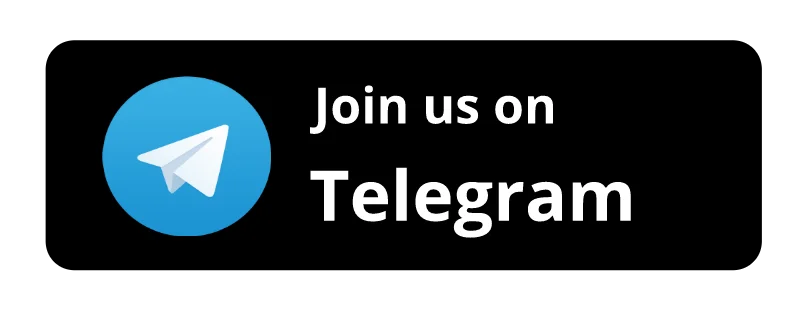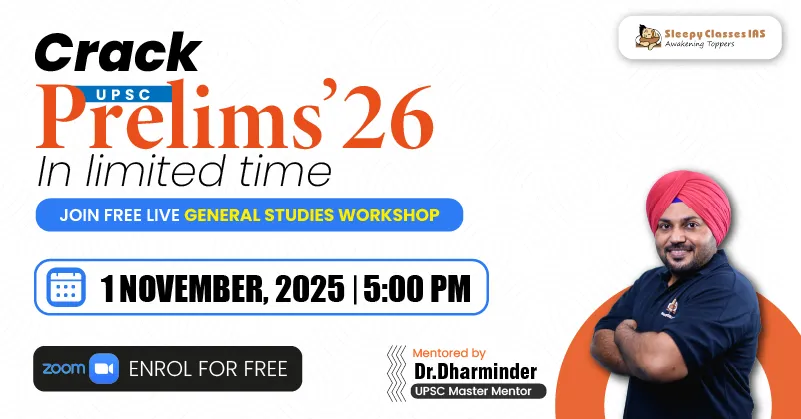Question 1
Science and Technology | Vaccines | Easy | Live Mint
SOURCE
Consider the following pairs
Typhoid vaccine – Inactivated Vaccine
Polio vaccine – Live attenuated vaccine
Tetanus vaccine – Toxoid Vaccine
How many pairs are correctly matched?
A) only one
B) only two
C) All the three
D) None of the above
Solution & Detailed Explanation
Answer: (C) All the three
Detailed Explanation
1. Live attenuated vaccines
Pathogens like viruses or bacteria are weakened by genetic manipulations to limit its growth and thus do not cause disease to the host. In some modified versions of live vaccine an organism that is related to the pathogen is used that naturally grows poorly in humans. The weakened pathogen generates a broad immune response in the host similar to that shown by an infected individual with a natural pathogen.
Examples:
- Oral Sabin polio vaccine
- MRV Vaccine (Measles, Mumps, Rubella, and Varicella)
- Nasal influenza vaccine
- Bacille Calmette-Guerin (BCG) vaccine
- Varicella vaccine
- Rotavirus vaccine
2. Inactivated or Dead vaccines
The disease-causing pathogen is killed or inactivated, usually through a thermal (application of high temperature) or chemical (formalin etc.) process. Such vaccines, when administered, elicit a robust immune response that mimics most of the responses seen during an infection.
Examples:
- Typhoid vaccine
- Influenza vaccine
- Salk polio vaccine
- Hepatitis A vaccine
3. Acellular or Subunit vaccines
Acellular means not containing the whole cells. Acellular vaccines do not contain the whole bacteria or viruses. Instead, they contain polysaccharides or proteins from the surface of the bacteria or virus. These polysaccharides or proteins are the parts that our immune system recognizes as ‘foreign’ and evoke immune response against them. There are many types of a cellular vaccines:
A. Toxoid Vaccine: Some pathogenic bacteria release toxins or poisonous proteins when they attack the body. Some vaccines are made by inactivating these toxins chemically and called ‘toxoids’, because they look like toxins but not poisonous. They trigger a strong immune response.
Examples:
- Diphtheria vaccine
- Tetanus vaccine
- Pertussis vaccine
B. Conjugate Vaccine: Earlier polysaccharide vaccines were made using sugar molecules present on the surface of the bacteria but it was found to be less effective in babies and young children. Researchers discovered that these vaccines can work better if the bacterial polysaccharide molecules are chemically linked or conjugated to a carrier protein. Addition of other proteins confers the immunological attributes of the carrier to the antigen and thus induces a stronger immune response effective enough for younger children also.
Examples:
- Haemophilus influenza type b (Hib) conjugate vaccine
- Pneumococcal conjugate vaccine
- Meningococcal C conjugate vaccine
C. Recombinant Vaccine: A small piece of the DNA is taken from the disease-causing bacterium or virus. The particular gene is incorporated into plasmid or a carrier vehicle which enables production of large quantities of well-defined proteins, which are then used as vaccines.
Examples:
- Hepatitis B vaccine
- Human papillomavirus (HPV) vaccine
D. DNA/RNA Vaccine: Genetic material, either DNA or RNA, from the pathogenic bacteria or virus is introduced into the human cells and then the cell machinery is employed to produce the protein encoded by the inserted gene(s) of the pathogen. Our body’s immune system detects such protein as a foreign agent and produces an immune response against the whole pathogen. At present, different types of nucleic-acid vaccines are in developmental, pre-clinical and clinical evaluation phases e.g. HIV vaccine.
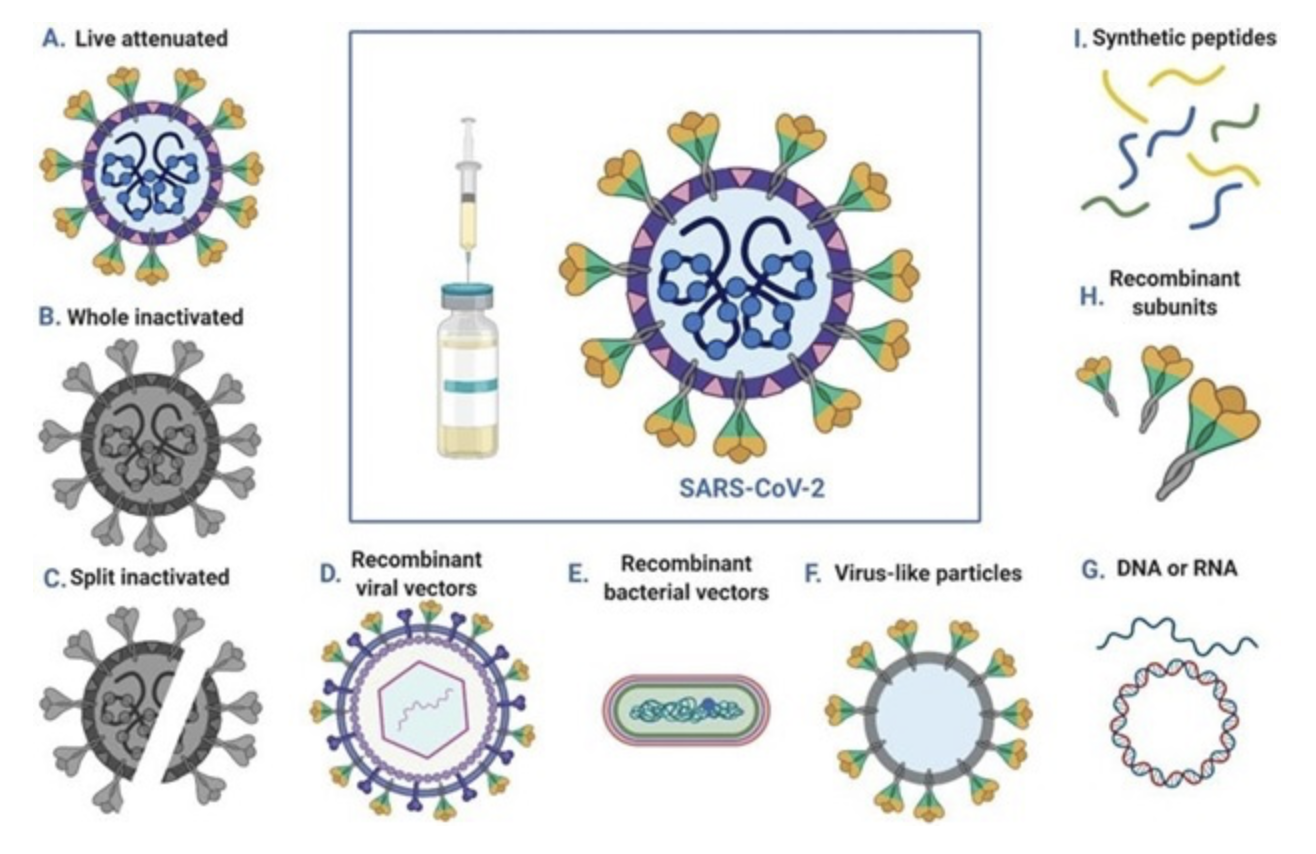
Question 2
Governance | Schemes | Medium | Press Information Bureau
SOURCE
Consider the following statements:
1. PM Jan Dhan Yojana (PMJDY) was launched as the National Mission for Financial Inclusion
2. It aims to provide at least one basic bank account to every household.
Which of the statements above is or correct
A) 1 only
B) 2 only
C) Both 1 and 2
D) None of the above
Solution & Detailed Explanation
Answer: (C) Both 1 and 2
Detailed Explanation
PM Jan Dhan Yojana (PMJDY) was launched as the National Mission for Financial Inclusion, with the aim to provide universal access to banking facilities with at least one basic bank account to every household.
Key highlights, as of March 2025, include:
PM Jan Dhan Accounts: 55.17 crore
Deposit in accounts: Rs. 2,61,461.25 crore
Women accounts: 30.80 crore
Question 3
Governance | Schemes | Medium | Press Information Bureau
SOURCE
Consider the following statements:
1. Pradhan Mantri Surakshit Matritva Abhiyan (PMSMA) is a flagship initiative of the Ministry of Women and Child Development.
2. India’s Maternal Mortality Ratio (MMR) declined to 80 per lakh live births in 2021-23 under PMSMA
Which of the statements above is or correct
A) 1 only
B) 2 only
C) Both 1 and 2
D) None of the above
Solution & Detailed Explanation
Answer: (B) 2 only
Detailed Explanation
Statement 1 is incorrect: Launched in June 2016, the Pradhan Mantri Surakshit Matritva Abhiyan (PMSMA) is a flagship initiative of the Ministry of Health and Family Welfare, Government of India. It was designed to provide assured, comprehensive, and quality antenatal care (ANC) services free of cost to all pregnant women on the 9th of every month, particularly during the second and third trimesters. The core aim is to reduce maternal and neonatal mortality by facilitating early detection and prompt management of high-risk pregnancies.
Statement 2 is correct: The government’s combined efforts to provide antenatal care and ensure proper nutrition for pregnant women have led to a significant improvement in India’s Maternal Mortality Ratio (MMR), which declined from 130 per lakh live births in 2014-16 to 80 per lakh live births in 2021-23—a notable reduction of 50 points.
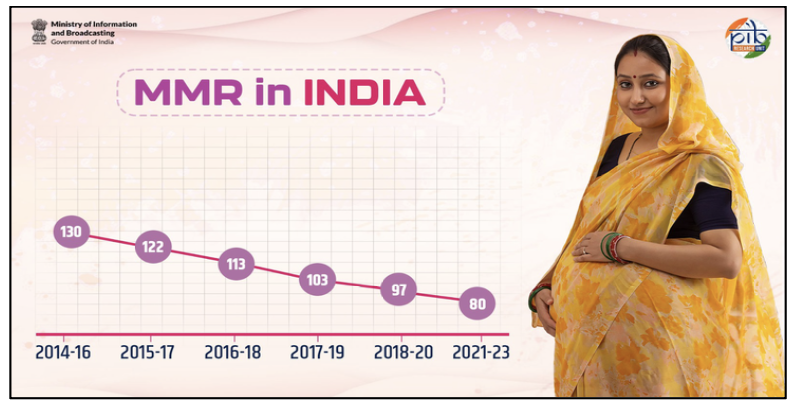
Question 4
Governance | Schemes | Easy | Press Information Bureau
SOURCE
Consider the following statements:
1. Mahatma Gandhi NREGA prioritizes sustainable development and environmental stewardship.
2. In April 2025, the demand for MNREGA rose to 20.12 million as compared to the previous year.
Which of the statements above is or correct
A) 1 only
B) 2 only
C) Both 1 and 2
D) None of the above
Solution & Detailed Explanation
Answer: (A) 1 only
Detailed Explanation
The vision of Mahatma Gandhi NREGA is to enhance the livelihood security of rural households across the country by providing at least 100 days of guaranteed wage employment in a financial year to every rural household whose adult members volunteer to do unskilled manual work. Mahatma Gandhi NREGA recognizes the importance of strengthening the livelihood resource base of the poor by reaching the most vulnerable sections of rural areas, including Scheduled Castes, Scheduled Tribes, women-headed households, and other marginalized groups.
The scheme encourages a sense of community and collective responsibility by strengthening Panchayat Raj institutions. Mahatma Gandhi NREGA promotes a bottom-up approach to planning and execution, empowering local communities to take charge of their development. Through the creation of productive assets of prescribed quality and durability, the scheme addresses immediate economic needs while laying the foundation for long-term prosperity.
Statement 1 is correct: Mahatma Gandhi NREGA prioritizes sustainable development and environmental stewardship, striving to create a greener, more sustainable future for generations to come by prioritizing works that contribute to ecological conservation and rural infrastructure development. Central to the scheme’s vision is a commitment to transparency and accountability, ensuring that funds are utilized efficiently, and beneficiaries’ rights are upheld through mechanisms such as social audits, grievance redressal, and proactive public disclosure.
Statement 2 is incorrect: In April 2025, the demand for MNREGA fell to 20.12 million from 21.52 million compared to a year earlier.
Question 5
Economy | Inclusive Growth | Medium | Live Mint
SOURCE
Consider the following statements:
1. The global poverty line is actually the median for only low-income countries and indicates extreme poverty.
2. The global poverty line is adjusted based on the Purchasing Power Parity of the people in different countries.
3. This data is based on the Wholesale Price Index data collected by the Ministry of Commerce and Industry
How many statements are correct?
A) Only one
B) Only two
C) All of the above
D) None of the above
Solution & Detailed Explanation
Answer: (B) Only two
Detailed Explanation
Statement 1 is correct: This poverty line is the median for only low-income countries (LIC) and so, indicates “extreme poverty”. There are two more poverty lines: for lower-middle income countries (revised from $3.65 to $4.20 a day), and for middle-income ones (revised from $6.85 to $8.30). By the $4.20 poverty line, 23.9% of Indians were poor in 2022, versus 28.1% earlier. This will be more relevant for India moving forward as extreme poverty seems to have shrunk a lot.
Statement 2 is correct: The poverty line is the minimum spending level needed for basic nutrition, clothing and shelter.
Deciding this level globally is tricky: a simple exchange rate adjustment of India’s poverty line wouldn’t make it comparable with say, the US or Kenya. For this, researchers in 1990 created a global poverty line which was adjusted for “purchasing power parity” or PPP-an adjustment that helps a dollar buy the same goods and services in all countries. That gave us the first global poverty line: $1 a day (at 1985 PPP). But inflation trends vary, so this needs to be updated.
Statement 3 is incorrect: The World Bank has used India’s 2022-23 consumption expenditure survey (CES), the first in 11 years. So far, it had used alternative sources: its best possible estimate was 12.9% for 2021 ($2.15/day line). Now, it’s 5.3%: the change comes both from the new line and from the new official data. At the old benchmark ($2.15/ day), 2.4% of Indians were poor in 2022.
Additional Information
Household Consumer Expenditure Survey (HCE)S is designed to collect information on consumption and expenditure of the households on goods and services. The survey provides data required to assess trends in economic well-being and to determine and update the basket of consumer goods and services and weights used for the calculation of the Consumer Price Index. Data collected in HCES is also used to measure poverty, inequality, and social exclusion. The Monthly Per Capita Consumption Expenditure (MPCE) compiled from HCES is the primary indicator used for most analytical purposes.
Question 6
Governance | Laws | Easy | The Hindu
SOURCE
Consider the following:
1. Bismuth
2. Cobalt
3. Copper
4. Gallium
5. Graphite
6. Tin
How many of the minerals stated above are critical minerals as per the Mines and Minerals Development and Regulation Act of 1957.
A) Only three
B) Only four
C) Only five
D) Only six
Solution & Detailed Explanation
Answer: (D) Only six
Detailed Explanation
The government has released a list of 30 critical minerals for India. These minerals are Antimony, Beryllium, Bismuth, Cobalt, Copper, Gallium, Germanium, Graphite, Hafnium, Indium, Lithium, Molybdenum, Niobium, Nickel, PGE, Phosphorous, Potash, REE, Rhenium, Silicon, Strontium, Tantalum, Tellurium, Tin, Titanium, Tungsten, Vanadium, Zirconium, Selenium and Cadmium.
Question 7
Science and Technology | Genetics | Medium | The Hindu
SOURCE
With respect to gene-editing technique, consider the following:
1. CRISPR-Cas9 technology can only remove the sections of the DNA sequence.
2. The Cas9 follows the guide RNA to the same location in the DNA sequence.
Which of the statements above is or correct
A) 1 only
B) 2 only
C) Both 1 and 2
D) None of the above
Solution & Detailed Explanation
Answer: (B) 2 only
Detailed Explanation
Statement 1 is incorrect: CRISPR-Cas9 is a unique technology that enables geneticists and medical researchers to edit parts of the genome by removing, adding or altering sections of the DNA sequence.
It is currently the simplest, most versatile and precise method of genetic manipulation and is therefore causing a buzz in the science world.
The CRISPR-Cas9 system consists of two key molecules that introduce a change (mutation) into the DNA. These are:
an enzyme called Cas9. This acts as a pair of ‘molecular scissors’ that can cut the two strands of DNA at a specific location in the genome so that bits of DNA can then be added or removed.
a piece of RNA called guide RNA (gRNA). This consists of a small piece of pre-designed RNA sequence (about 20 bases long) located within a longer RNA scaffold. The scaffold part binds to DNA and the pre-designed sequence ‘guides’ Cas9 to the right part of the genome. This makes sure that the Cas9 enzyme cuts at the right point in the genome.
The guide RNA is designed to find and bind to a specific sequence in the DNA. The guide RNA has RNA bases that are complementary to those of the target DNA sequence in the genome. This means that, at least in theory, the guide RNA will only bind to the target sequence and no other regions of the genome.
Statement 2 is correct: The Cas9 follows the guide RNA to the same location in the DNA sequence and makes a cut across both strands of the DNA.
At this stage the cell recognises that the DNA is damaged and tries to repair it.
Scientists can use the DNA repair machinery to introduce changes to one or more genes in the genome of a cell of interest.
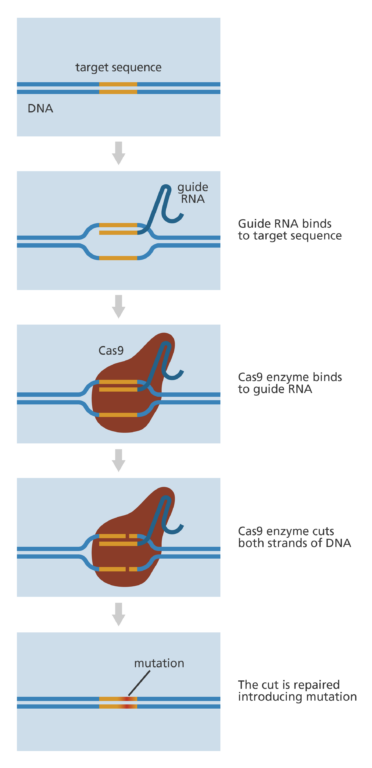
Question 8
International Relations | Maps | Easy | Indian Express
SOURCE
Which of the following countries does not share its border with Turkey?
A) Armenia
B) Georgia
C) Greece
D) Serbia
Solution & Detailed Explanation
Answer: (D) Serbia
Detailed Explanation
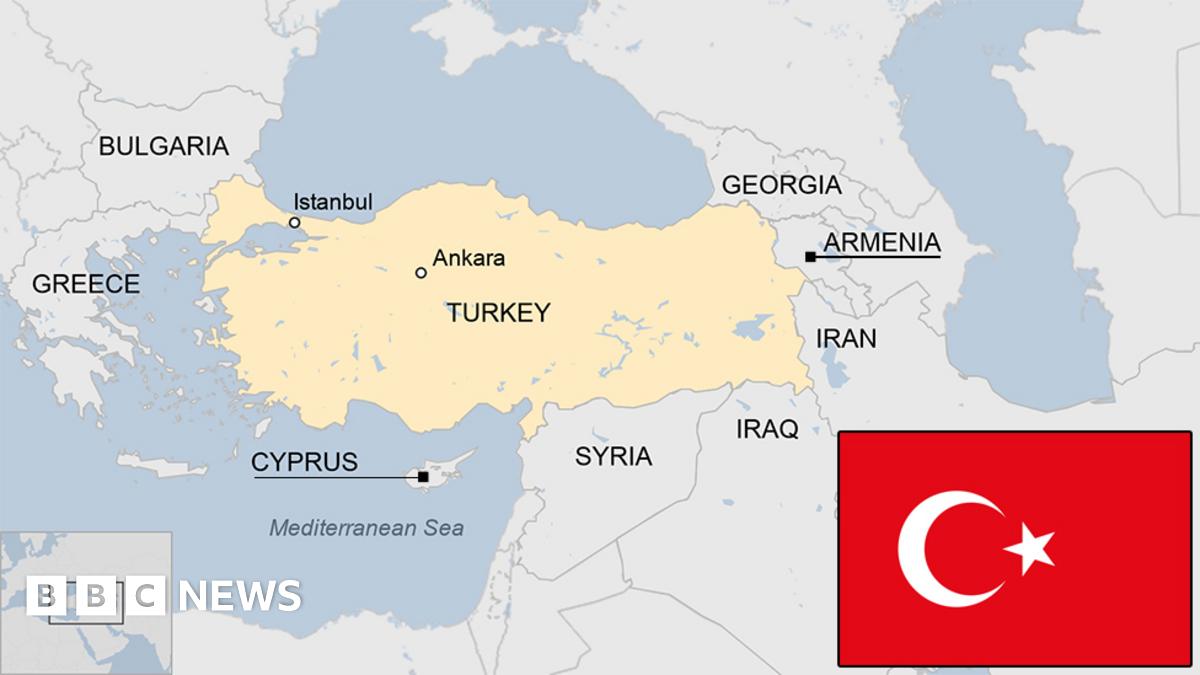
Question 9
Polity | Elections | Easy | Indian Express
SOURCE
Consider the following:
1. Part XVI of the Constitution deals with Elections.
2. The words Rajpramukh was omitted by the seventh constitution amendment.
Which of the statements above is or correct
A) 1 only
B) 2 only
C) Both 1 and 2
D) None of the above
Solution & Detailed Explanation
Answer: (D) None of the above
Detailed Explanation
Statement 1 is incorrect: Part XV of the Constitution deals with Elections.
Statement 2 is incorrect: The words “or Rajpramukh” omitted by the Constitution (Seventh Amendment) Act, 1956.
Question 10
Environment | Climate Change | Medium | The Hindu
SOURCE
With respect to Stratospheric aerosol injection, consider the following statements:
1. SAI was inspired by volcanic eruptions.
2. Higher altitude injection is less effective because particles stay for a shorter period.
Which of the statements above is or correct
A) 1 only
B) 2 only
C) Both 1 and 2
D) None of the above
Solution & Detailed Explanation
Answer: (A) 1 only
Detailed Explanation
Statement 1 is correct: SAI aims to cool the planet and reduce the impact of climate change by adding a layer of tiny reflective particles to the high atmosphere. The method was inspired by volcanic eruptions, which have been known to have a cooling effect by spewing aerosols into the air.
Statement 2 is incorrect: Higher altitude injection is more effective because particles stay for longer. At lower altitudes particles are more likely to be caught in clouds and washed out by rain. Despite this, researchers are exploring low-altitude spraying because it is technically less challenging.
Researchers found that 12 million tonnes of sulphur dioxide every year at an altitude of 13 km could cool the planet 0.6 degrees Celsius.
The spray quantity is comparable to the amount added to the atmosphere by the Mount Pinatubo volcano in 1991.

